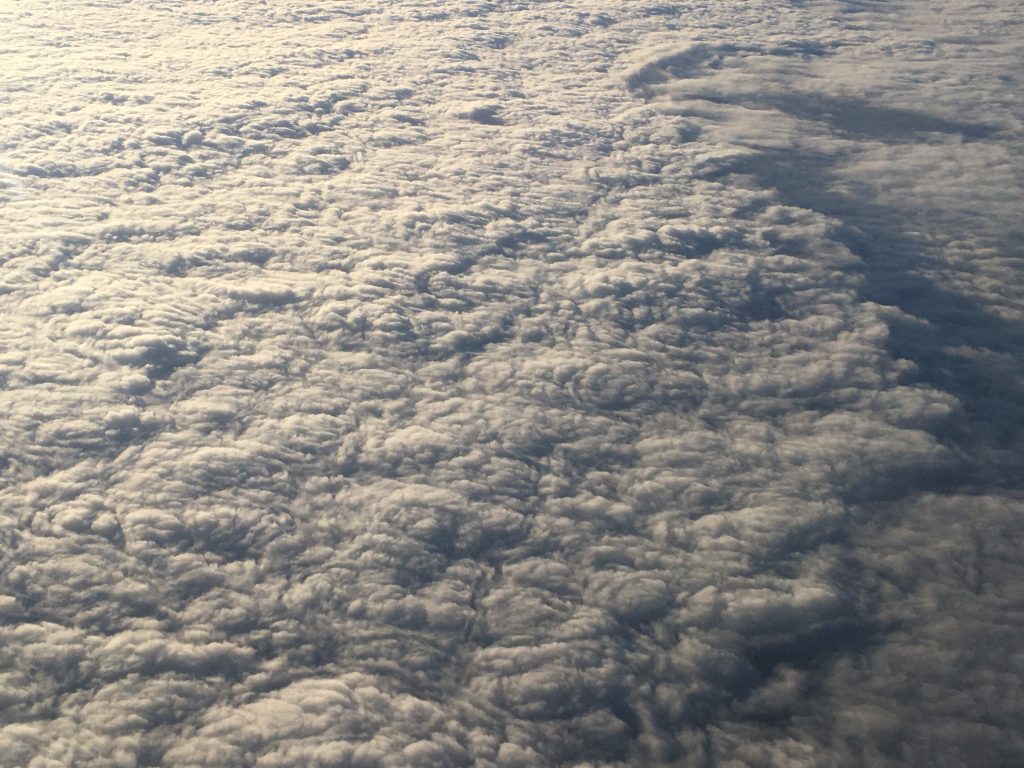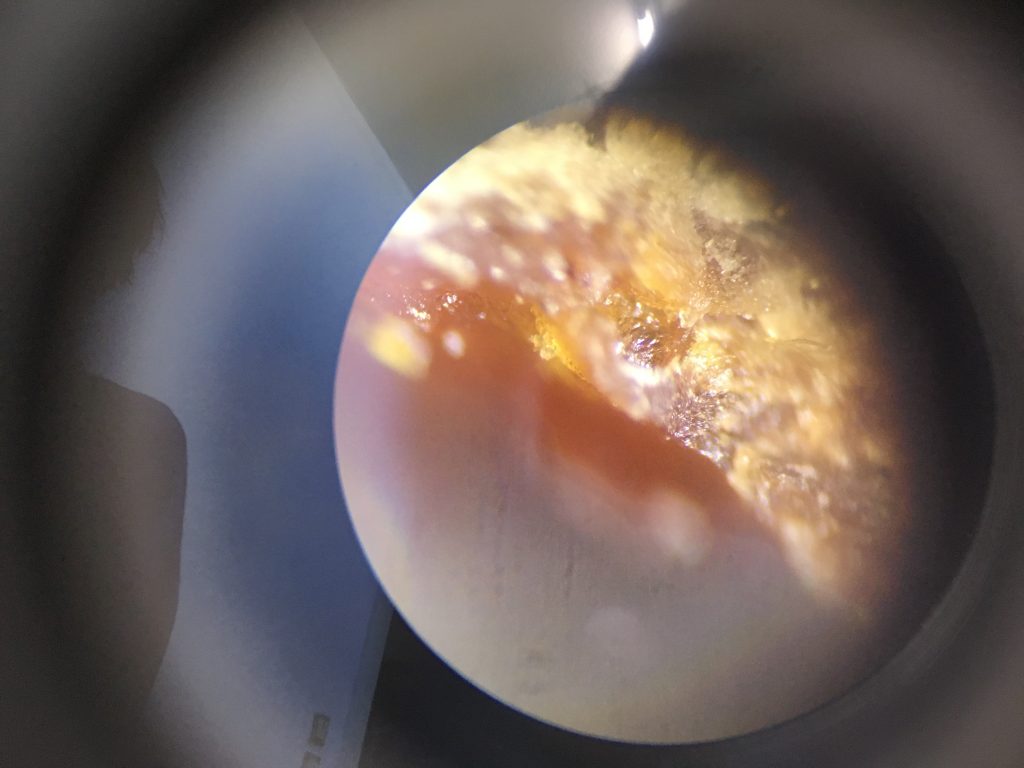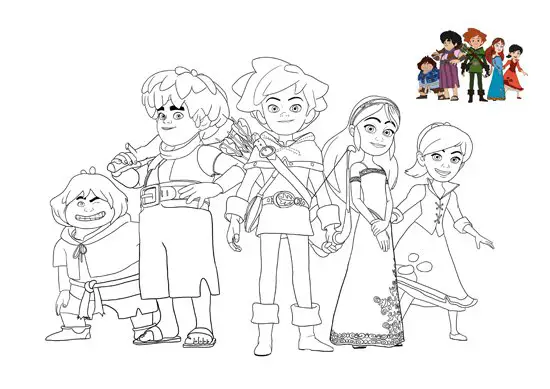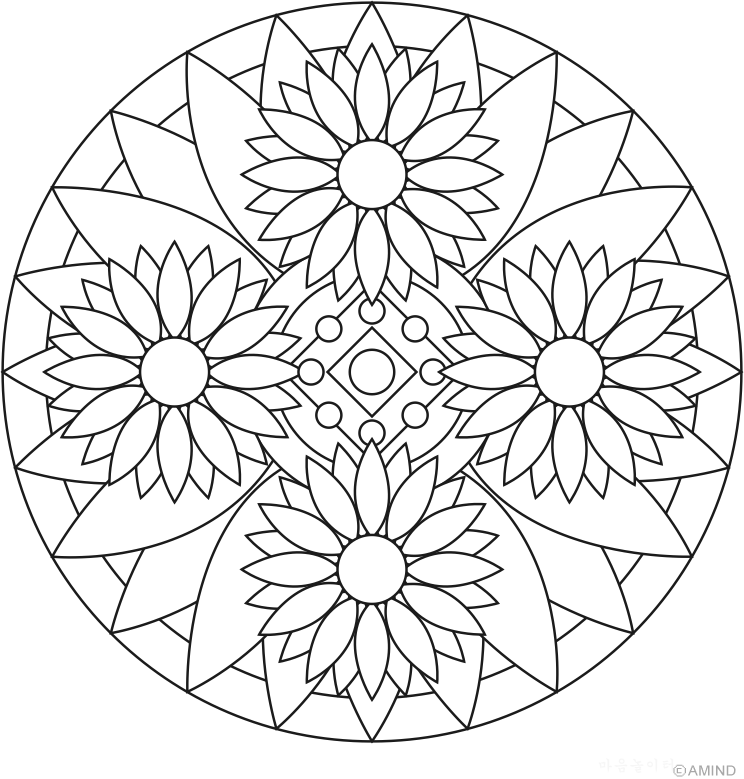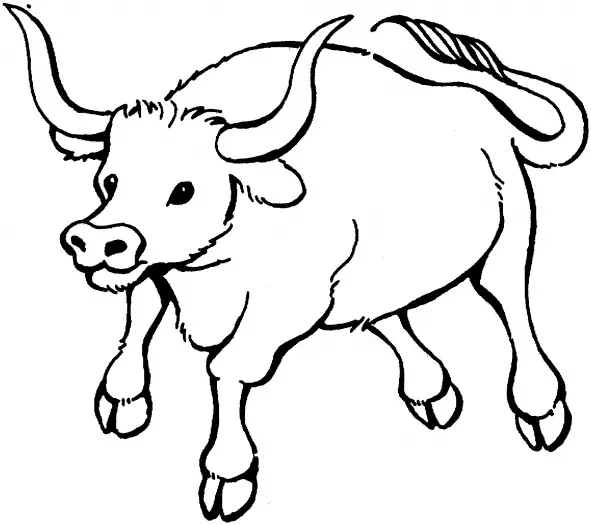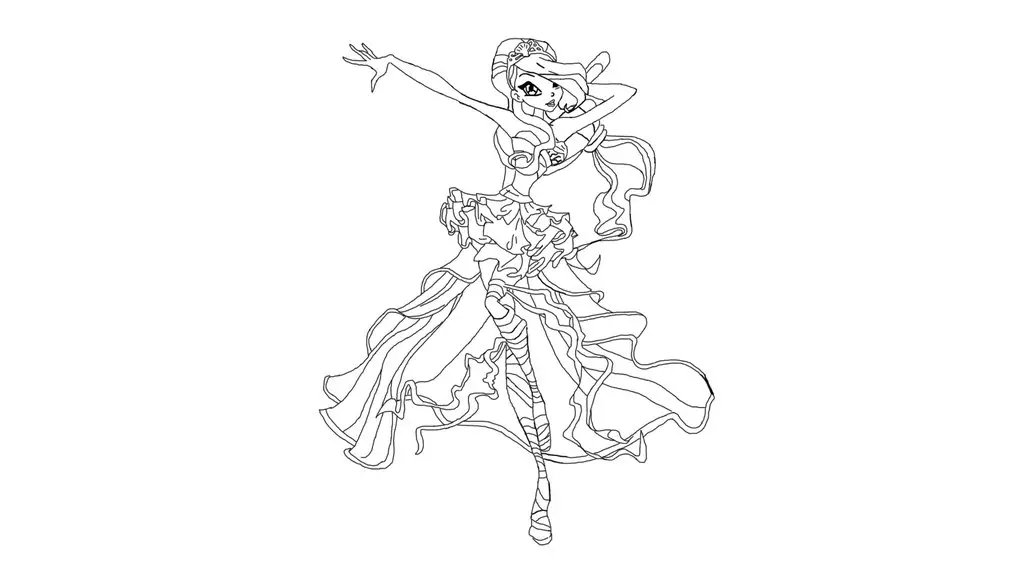Pan In almost every flight I took in the last few years my seat was always next to the aisle. In the last few flights I selected the seat in the window, exchanging one habit for another. I am a person of temporary habits that, however, seem immovable to me when I inhabit them. Looking out the window of the plane made me realize that flying is a vision technology that allows us to see things that we cannot see “on the ground”. Or at least aircrafts allow us to perceive the world from a very different perspective. I think especially of clouds, but also of roads, buildings, oceans, mountains, lakes or even airports themselves. The window of the plane reminded me of your microscope, especially when I landed. I suppose you also know very well that moment when the plane descends, crossing the clouds, which cease to be clouds and become fog, to approach the ground as if in a kind of slow motion (that travels at hundreds of kilometres per hour). This time the fact of landing was disappointing to me, because the microscope disappeared and the airplane was just one more (air)plane among many others. Because it was no longer possible to be in that state of suspension and contemplation “from above”, without it implying the hierarchy of the super-observer that appears in so many novels. The super-observer is a kind of scientist who always knows everything, an external insider. But “everything” here only means that (s)he knows more than the rest of the characters. And so we.
RanI totally agree Sonia! The funny thing about the moment of descending is that the total mass of our physical volume (the body) is fixated on the seat. This safe (as i was told) position restricts our bodily movement to stretch our neck and head towards the tiny window next to the seat. Consequently, the eye muscles are extremely charged with excitement, curiosity and fantasy, extra excited to look out of the window. One can feel the retinal blood vessels and the waters in each protein cell are expanded ‘forward’: to a world revealed in front of the eyes. It is a world neither alien nor familiar, regardless of any recognizable object or texture. It is a world one dimensional, in relation to scale. As if reality is composed with onion layers. During the physical descending, the eyes dive into different layers of reality, from macro to micro, and from micro to macro. One always know that there is a crucial point – a border line – between the transition of each layer: when does a car suddenly become so big; or when is the horizon behind these trees just a millisecond ago, or two and a half milliseconds ago, or when does the idea of horizon even kicks in. But one can never catch it, or experience it on the spot. Instead, one thinks that (s)he saw it while it happened just a second ago, but one is left experienceless, knowledgeless in this second. So one tries harder, until gaining a collective memory/knowledge of the entire process. One can no longer remember each layer of the reality, but only remembers an overview of reality as a whole and the amazing experience as an incident. The layers are locked up, again, or always locked up in the swirl of reality itself, and in each one of us. Disappointed but also satisfied at the same time; addicted to that experience, blurry but also crystal-vivid at the same time. This entire matter is through for observing subjects under a microscope. Perhaps the best thought experiment I can give to express this in words is:
Observable reality can be:
Layer 1 reality – layer 2 reality – layer 3 reality – layer 4 reality – and so on.
Or, observable reality can be:
Layer 1 reality – back to a sort of beginning with layer 1 reality in mind – layer 2 reality – back to a sort of beginning with layer 1 and plus layer 2 reality – layer 3 reality – back to a sort of beginning with layer 1, layer 2 and plus layer 3 reality – layer 4 reality – back to a sort of beginning with layer 1, layer 2, layer 3 and plus layer 4 reality – and so on.
How do i see it all? How can i digest such a matter in the kind of ‘order’ that i can have an access to honor all the details that come along the way? I started making pictures, and I ended up making pictures, even though the in-between just continues.
Pan A few days ago I was telling you that the images you produce are vision technologies. Among many other things, because they are also three-dimensional objects with an unequal load of content. One side of the image is “full” and the other side is “empty”, as you told me. It has always seemed unfair to me the way in which we can reduce artistic works and many other things with a phrase or a description. It is unfair in relation to the artists, but above all towards the works themselves. At the same time, I also find this perception of language as a reductionist tool very unfair. I especially like Wittgenstein’s idea that the inexpressible is inexpressibly contained in what is expressed. I know it because of Maggie Nelson’s writing, who is especially skilled at “inexpressing“. Do you think the invisible is invisibly contained in the visible? Is it something that could apply to your work?
RanI love the term ‘ vision technologies’. The understanding of technology goes much broader than just electrical or scientific gadgets of 2019. As you were saying, gleaning an idea from Ursula K. Le Guin, the first piece of human technological evolution might be the invention/discovery of a container-like shape for eating and drinking. Much earlier than any weapon invented for killing. For me, the term technology means a cultivated confirmation of a manner for simply reaching a goal. The term itself is independent from any general action of tool invention. This is because of practicality in naming and communicating. All cultures developed phrases for everything, i.e. throat sounds and finger strokes for everything. But when it comes to a none-verbal situation, phrases and descriptions seem to fail. As you say, the unfairness. Because none-verbal situations need to expand: the inexpressibly contained express. Such as poetry. We never land on the written lines. We sculpt the in-between lines that is not written. I do feel that I share the similar logic with the idea, though my work is not poetic at all. It is hard lingers and traces of vision technology. Theory of techno?
Pan Going back to the clouds, with them I put into practice another habit: that of taking compulsive pictures with my phone. There are thousands of thousands of images that I save, store and keep in files that I will barely look at again. The Archive Fever was this? The laptop getting hot and breathing heavily? I also took pictures from your microscope that afternoon we spent together. It seems especially poetic to me that we were looking at things through a microscope surrounded by images of an enlarged molecular reality. I remember very much the images on the wall of your studio, even though we scarcely talked about them then. I think there is a relationship, beyond the similarity in the visual representations, between the macro-scale realities and the micro-scale realities. The difference between an atom and a galaxy is simply a change of perspective. Both are things we cannot access with our eyes. The two are realities represented by a similar aesthetics. We need other eyes to approach them, as I also need the camera on my phone to look at the world differently and not so much to represent it. It’s particularly reassuring that my phone is as short-sighted as I am, that it always needs a few seconds to focus its vision. Is knowledge short-sighted? Unlike something you wrote in relation to your work, I don’t think that knowledge replaces experience, but that it’s just another form of experience. Have you ever been “high on rational thinking”? Me many times. In fact, I love reading theory so much because of how it affects my body and not just my mind. When I get high on words, sensations and ideas from other people, I can’t stand still, I have to move. I have to dance. Since months now and thanks to a conversation with Siegmar Zacharias I can refer to “visceral thinking” in order to make the emotions visible in the thought. Is there something you have not yet seen and would like to see? Why are you so fascinated by molecular life? They say that there is a melancholy about the universe itself, caused by the feeling that something is too big to comprehend. What (human) feeling would you associate with the molecular scale of things?
RanI like these ‘short sighted’ snapshots from your phone. Last time we sat in Cafe Bateau Ivre, you were trying to take a zoomed in snapshot of the window blind. Since your phone camera is ‘short sighted’, the snapshot was totally different from what the camera was pointing at. It was not a distortion, but a completely different scenery, a motion of sightedness, a manifest of the camera ‘muscle’ which turns the snapshot back to the ‘eye’ (the camera) and becomes about the ‘eye’. This reminds me of how I started to get interested in the molecular scale.
On one hand, I have been observing subjects under a microscope for six years. This constant long term action has truly become a habit of mine, or a ritual towards ‘a melancholy about the universe itself’. Just when I am in the ‘melancholy’, I would not even notice because it has been placed by a motion of looking: isolated, clinical, clean and fleeting. On the other hand, every time when the illuminating light source is switched on and flows into my eyes through the double eyepiece station, I can see my own eyelashes projected upside down in the lens, and my own eye floaters and sparkling white blood cells scratching my eyes and overlapping with the observed subjects. Each floater is a chain of molecules, magnified by my own bio-lens. I see the inside of my own body, magnified spontaneously. Yet the inside is out, becomes one body with the magnified subject that is at the other end of the eyepiece. I become self aware, a nobody but anything that is possibly being shaped by the observed subjects. It scares me that what I am made of is transparent and without outsource, simply biochemically shimmers and vibrates.
But there is so much to dig in deeper when i can see the even smaller information is beyond my vision. Through reading and learning, I know there is the atomic plane and many planes beyond. Up to now, knowledge replaces my direct experience of simple observation. I cannot get around biology and chemistry if i want to ‘see’ the non-observable level of reality. So I don’t think knowledge replaces general experience, but I think knowledge hijacks its own subject that is beyond the threshold of the perceivable reality. You and me vanish beyond that threshold. Perhaps the melancholy is not because it is too big to comprehend, but because it is ‘nothing’, or everything.
There is so much i have not seen yet. Maybe to the extreme of that desire, I can even be blind when I cross the threshold. So for the last time, to go a bit further with the thought experiment in words.
From the observable to the non-observable:
Direct experience based Layer 1 reality – direct experience based layer 2 reality – direct experience based layer 3 reality – and so on – threshold – knowledge based layer X reality – knowledge based layer Y reality – and so on – until no one knows anymore.
There is always a forward that one would never know.
Pan Maybe it’s arrogant of me, but when I get involved with a person who, not by chance, is an artist, I relate my main working material to her or his own. And by “my” work material I mean language, which is also shared by all human beings. It is also shared by machines, which are not intelligent but large data computing systems. Here I can’t help feeling anthropocentric, understanding intelligence from a creative force that the AI certainly doesn’t have and won’t have if it continues to operate under the same parameters. But what I wanted to tell (you) is that reading you has made me think again that it is very absurd to believe that language is immaterial, when almost all words refer to things or situations that are enormously material. How can we say that the word “table” is not material if it potentially contains all the tables in the world? And, at the same time, the materiality of the molecules, of the data, of the proteins, of the digital images, of love, of tobacco, slips away from me, although I live with all of them every second of my life.
Moreover, even the “things” you produce are beyond my understanding and this is where I believe that a possible definition for art (or for an ideal of art) would be “production and knowledge with continuous remnants of meaning”. It was the artist Maria León who spoke to me about the “remaining meaning” within artistic language as one of its hallmarks with regards to other forms of language that struggle against the imprecision of the direction of words. Perhaps words are more like roundabouts than roads. What fascinates me about art is what cannot be said with words (even if words appear), in what “messes up the discourse”, in what transforms the anatomy of “what is said” and “what is seen”. I also believe that art could be considered a technology with very diverse functions. Some are extremely exciting, like “your vision devices”; others are politically disheartening, like financial speculation or institutional manipulation. But to believe that there can be a satisfactory definition for art is another of the many fictions we support without realizing it. And I wonder, how many things that we don’t believe in are we continually supporting? Things we don’t see, but we do by participating in them. And then there are the things that we don’t see, but that are part of us. Lately I think that, when we get sick, it’s a symptom that we’re very hospitable to these organisms called viruses.
But I didn’t want to talk to you about abstractions, but more practical things. It’s striking how what I end up writing is nothing like what I intended to write. I wanted to try to make you an exercise of (my) reality this morning based on layers. I wanted to expose all the chaos that surrounds these words that I write, from shower soap to critical theories on AI. Does it happen to you when you’re thinking about making a piece, that materials and files take you completely to other places? This morning I looked for the images I took with my phone that afternoon we were together at Cafe Bateau Ivre, accompanied by chocolate with tiny chunks of bretzels inside it. I remember that this chocolate later disappointed you, because you didn’t get to feel the flavor of the bretzels promised by its packaging. This disappointment is something I relate to conferences in institutions; they never fulfill the promises they announce in the handout programs. Those bretzel chunks also make me think of the bug that has been permanently printed on one of your digital-material images. But then the situation would be inversely different: biting a piece of any chocolate that tastes unexpectedly like bretzels. Has it ever happened to you that you eat something and it tastes like something else? In my mouth, corn tastes like meat on many occasions. And I like not knowingly knowing why.
This bug shows us how even within such a meticulous process as yours, inserts of (another) life appear, forms of contingency. Between insect and insert there is only a difference of one letter, but this small difference leads to very distinct but complementary worlds. The appearance of the insect printed on your work helps me connect with the structure of this conversation. I wrote a long text and, instead of continuing it with another long fragment, you decided to enter between my paragraphs, modifying my thinking logic and breaking the linear character of my writing. You inserted yourself into my text, producing yours/ours. When I opened the document my surprise was enormous. Thanks to you, I realized that I have been using one method for years without realizing that there are other methods that can be put into practice. If this conversation were an onion, its layers do not appear one after the other, but some layers appear in the middle of others. To differentiate the different layers and times, we could use colors. At the moment, it would be a two-colored onion, but it could have many more if we keep rewriting (between) our words. Until it is impossible to define the colors or authorship of the words at first glance.
This is something that your layer exercise contains too. There’s something geological about this conversation, about thinking, about your images. It seems that if we make a cut in the Earth, it is not true that there is a temporal sequence from the past to the present in its layers. Because of tectonic movements, earlier fragments of earth appear closer to those born later. What is the temporality that this insect is pointing at? How does time manifest itself in the digital strata? I’m imagining a kind of digital dust that accumulates between the data.
I’m really looking forward to knowing how you’ll get into these fragments I’m writing, although this conversation ends here for a while and continues in other media, like our email accounts or winter cafes.
The past survives in the future.
Ran Where would the digital dust land when time and space can be out of the picture, even when such a picture cannot be mentally constructed, because the endless variations of the possible imaginations are unsatisfying in comparison to the one and only true event. So the digital dust can only land in us while our motherly inherited mitochondria power our mind to facilitate the landing: by words, and for words, in which there seems no representation process is needed anymore. Then, as you said, language is enormously material. Things we don’t see, but we do ‘see’ by participating in them. The effort of trying to ‘translate’ the participation of unseen into a representational image is what I do as an artist. How odd is that! Just because I notice it and it haunts me? Or do I have some kind of blood-oath with it? Or with what it contains? or directly with the word ‘art’? I mean I am not interested in looking for the answers, and not even interested in these questions. So I guess it is the individual ‘not-yet-formed’ and the collective ‘not-yet-formed’ that interest me.
I don’t know in what sense this makes to respond to your words nearly 120 days after, when the world has literally changed. A real virus broke out, contained in the bodies, perfectly matched biochemical membranes, merged, transfixed. It just works! Therefore, motionless with horrors and wonders. So time is back in the mind, in a sense of shockingly discovering ourselves at the before and after threshold. The post-virus self awareness conditions me to read your pre-virus words. Then what has been added, taken away, or altered; what is relevant when many are experiencing a gravitational/psychological pull in bipolar directions. Not just the virus, something we cannot see structures the notion of time so differently.
Things we cannot see should not evoke any belief, but in reality, it is entirely the opposite. Maybe religious belief is the extreme version of that. I never really fully understand how a person goes around preaching the sort of ‘truth’ that cannot be tested, proved or questioned, even from the sense of an emotional connection. But one has to work hard to imagine such a content. It is not the true experience of such a source being circulated. It is the methodology of imagining it being transmitted. This means that invisibility has the ultimate power over anyone. It is always in front of me, one step further than me. Just because I can perceive, think and feel? It is killing me.
Even in scientific visualization, for a non-scientific person like me, I can only trust the scientists, yet I ‘believe’ in it, not because it is a belief, but a – temporarily valid – technology to facilitate me to understand the biochemical reality. It is not an experience, it is knowledge (Although both experience and knowledge are empirical?). But the kind of knowledge needs me to add my own imagination, I need to work on it, because the vision such a technology provides is a template, highly vivid and attractive by using color schemes, digital textures and unconditional shapes, but suggestive and temporary, not substitutive nor existential. It is because reality is not a technology, only the ways that approach it. I can only drown in the technical contents, but not what the contents ultimately point out. I cannot be a mitochondrion, even though I am also that, but I can only be the sum of me, a collective scale.
(image credit: still images from animation Mitochondria: the cell’s powerhouse, conception and scientific content by Alain Viel and Robert A. Lue, animation by XVIVO,video link: https://www.youtube.com/watch?v=vkYEYjintqU)
The bug that was accidentally pressed onto one of my recent works Resolution of Traits was a sort of a cut, clinically modified a ready me, in a sudden look; linear, but the linearity started a new non-linear initiation, which freshly shuffled a familiar composition of me and everything else (that I cannot take with me as part of the definition of me, the entire universe perhaps) into a new relation, then back to the familiarity in the next second. It felt like an extremely quick passing guest earthquake of the Goosebumps. It sounds dramatic, but weirdly it was a jump stitch. I suspected a millisecond difference of before and after, slightly paranoia and exciting. Like a person lives and works continuously on the 50th floor of a building for 10 years, she would experience time differently than the grounded ones. Such a slight change in a seemingly constant/definite personal quality after an event is super fascinating for me. By an event I mean, it could be a moment of looking at your tea cup, your computer cable, your dusty hard drive, or your pretzel crumbs on the table. Then living could just be a stitching of the endless events, and one can finally notice that there is nothing really normal in the eyes.
Pan I attended our conversation at the beginning of the year in Galicia. I was having as much trouble concentrating as I am now. Back then it was because I was in a place as strangely familiar as our childhood and teenage homes, begging for Internet connection in the old confectioneries that still resist becoming hipster bakeries. Its smell is even tastier than the cakes they sell, because it is the promise of a cake that is yet to come. Now I find it hard to concentrate because I am in a new kitchen, in a new house, in a new neighborhood, but in the same city. My things are the same but the distribution is different. This time I have an Internet connection but I’m disconnected from my off-line habits. The tabs on my browser – some have even been open for months, like Aimé Cesaire’s Discourse on Colonialism – are a sort of home with switching rooms that can follow the transit of our bodies with relative ease. It’s as comforting as it is scary how we feel at home on the Internet, isn’t it? As you told me in an email just a few hours ago, the feeling of abnormality within the supposed normality is enormous, either when we move close by, or not that far away. I have always believed that even if I moved to the building across the street or to an apartment in the same building, I would feel just as far away. Far from the past. And I think maybe moving too far away in spatial terms is moving closer. Close to the future. Each of these variants produces a different vertigo. I don’t know which one I prefer or if I should prefer one. Indecision is frowned upon and yet it is a fundamental situation for any change. Precisely now the normalization of abnormality is called “New Normal”. I think a lot about a phrase on a wall in a city in Chile that I saw in an image circulating on Twitter: We will not return to normality, because normality was the problem. And yet, I miss the old problematic normality.
This conversation started on Google Drive. Yesterday you emailed me a .doc with your words. Our conversation now has different digital layers. It also has different languages and translations. I can open both documents and place them next to each other. The fact that we each use a different program makes it impossible for me to really put them next to each other. One is above and one is below. The feeling of depth between layers within the supposed flatness of a screen still seems overwhelming to me. Your new document is missing my paragraphs from the beginning of the year, but when I read yours I’m glad you didn’t read them and pick up on our words from the end of 2019. They ended with a sentence that now feels more lapidary. A phrase that is, like many aphorisms, a stone thrown into the world looking to crash somewhere: the past survives in the future. One of the many effects of the crisis caused by the covid-19 is the resignification we make, involuntary in many cases, of whatever we read, see or hear. Our experience of the past is totally contaminated by the present virus. The virus is invisible, but its effects on human social reality are truly visible. They are even palpable now that we cannot touch as we used to. Returning to our aphorism, I now fear that many things that this present is reaffirming will end up surviving in the future. That physical distance will indeed become social distance. Language is certainly performative and creates terms like social distance and isolation. Not only are they not totally true, but they increase the feeling of living with a constant restraining order. I hear a cat running around upstairs. Maybe it’s a dog, but I want it to be a cat because I’m more familiar with them. From everything I told you at the beginning of the year in Galicia, I would like to rescue an anecdote. It’s strange to quote yourself, but it’s even stranger to quote things you’ve written and no one has read.
“Stains also float in our eyes, as you taught me when you told me about the flying flies, which move when we move our eyes. When I was a child, I became obsessed one night with a fluorine green spot, almost like a laser dot, floating in the sky. I spent a long time believing that I had seen a U.F.O.!!!, until I consciously closed my eyes to find out if it was an optical illusion. When the spot disappeared after consciously closed my eyes, the disappointment was great because it was preceded by a great emotion: that of seeing something which does not exist. Or rather, that of materially seeing something that only exists in our collective imagination, a flying saucer from another planet. And this maybe connects with the psychology of perception and with Gombrich’s writings, which I was so passionate about during my first year at university. To incompletely and partially summarizing it -from the flying flies in my memory- Gombrich comes to say that seeing is also a cultural convention and a learning process that is the result of a historical process in which we inherit schemes and patterns of vision. We do not see what “there is”, but we see what “we want to see”. I thought I saw a UFO because I wanted to see a UFO within a culture that makes us wish to see UFOs. “
The noise I hear is no longer from upstairs, but from next door. It’s not a cat or a dog anymore, maybe it’s a human being. But I insist that it’s still a cat. We live in a Shoringer’s normality. Maybe the “not yet formed” was always the only reliable shape of things. In a text I read, its author explained how when we see The Mona Lisa we are not really seeing a finished thing, a completed object, a painting that was done in the year 1503. We are simply witnessing a specific moment within a much larger event that we call the Mona Lisa. The Mona Lisa is a very slow mechanical and chemical event that will continue to unfold in time when the covid-19 will begin to be forgotten. The Mona Lisa is an especially useful example to talk about the construction of the image as a historical process or as an world-making-image. Lúa Coderch asks the following question: how much work is needed to produce an image? And by this she does not refer so much to producing an image itself, but to the image as a sense of reality. As an effect of verisimilitude. She used an anecdote from her childhood as an artistic statement. Entering the bathroom, not to take a shower, but to produce the simulacrum of the act of taking a shower. Something like presenting the scene of a crime we didn’t commit. In the case of the Mona Lisa, her image needs all the apparatus of art history and the tourist industry to survive as it does: museums, historians, books, artists, visitors, documentaries, tourists, cameras, hashtags, merchandising, low-cost airlines. Not only for the hardware of our technological devices, for La Mona Lisa dust also represents a danger. Well, not for her, but for her caretakers and preservers. It must be very suffocating and tiring to be The Mona Lisa. Not being able to grow old, not being able to get dirty, not being able to go to rest when you want, not being able to mess up your hair, having to permanently smile at the world, welcoming all those unknown intruders who come and sniff out the wrinkles of time and Leonardo da Vinci’s breath on your face. Not surprisingly, the Mona Lisa is also a woman. And perhaps she could give us some advice on social distance, as she has been practicing it for centuries. Not even a single bug is allowed near her. Can you imagine if The Mona Lisa woke up one day covered with bugs totally embedded in her?
I believe that the most powerful structures are those we cannot tangibly perceive. Ideology works on a conceptual level, but above all it works on a structural level. Capitalism is not even a philosophy or a perfectly organized table of contents. It is more like a virus that inhabits our bodies, that inhabits our habits and reacts with them. It is a technology that not only produces realities, but also appropriates reality as a technology of reproduction of itself. And I feel that this is why revolutions in the form of an instruction manual or manifesto are of little use, because they do not modify the technology they wish to hack into, but rather improve and perfect it in a perverse and unintentional way. Lately I believe that it is in the most apparently small gestures, repeating and multiplying them, where the most radical moments operate. Because they seem to gradually change the material composition of an object without the object noticing. But, as I write this, I realize that this is one of the ways in which capitalism acts. Next to me I have the breakfast bowl and I notice the traces of the teaspoon through the remains of yogurt, cinnamon and muesli. They remind me, again, of a crime scene. Perhaps because our smallest acts have global consequences. Do you also always eat the same breakfast for a while?
Ran Only when the tabs are accidentally lost, perhaps we start to want to read them. If that desire is strong enough, we are able to make up an entire content just to have it back! Different interfaces and windows are like a home indeed! Sometimes there seems to be an enormous space between two open windows/layers on the computer screen. I am so used to writing ‘offline’ with Word documents, as a tool it is invisible for me, allowing my thoughts to take shape and grow. Invisibility is also highly constructed by wishful or involuntary habits, individually or collectively.
When I change our texts to different programs, the first thing I notice is the font size. You often use font 11 on Google drive, but me size 12 on Word document. I never really paid attention to it as it comes as a default. But this default though the years, constructed my normality. Someone or a group of many in designing this normality, also shaped/shapes my reality, and the normality of these people were also normalized by their previous normality, and so on. This slight change of the font size, has a very strong effect that composes a vivid mental image in my head while I focus on reading, thinking and writing. This mental image is: I – or not really my physical body, but a rather abstract ‘I’, but, I can see it with great physical details without the capability to re-visualize that concrete physicality in the next second – stand, or walk, or float into a plane, this motion of moving into something, can be a zooming in effect, or a zooming out effect. Seemingly contradictory, but entirely logic. Then who possess such a logic? It feels much greater than my personal measurement, so I can therefore be convinced.
So what I want to say is, in between the many layers of normalities, there are equally many layers of ‘something else’, like the mental image I just described to you. This ‘something else’ has no quality. It is neither right nor wrong, nor an auto-pilot of thoughts and senses. Though it feels more like logic, simply because we are capable of experiencing it and reflecting on it while being ‘in’ it only at that moment. It is not yet any intuition or inspiration, but maybe a preface of those, a prototype that can ease or shake up a normality.
I also set my Word document in Irish, which is used as the measurement to highlight my spelling mistakes. I have no personal connection to Ireland nor have I ever been there, but in comparison to the involuntary exposures to English English and American English through my life, I guess because I want to keep my typing language abstract, I want to keep it invisible. So invisibility also feeds into normality. Now I am thinking of the Covid 19 virus itself also being invisible, will we – or maybe we already have – take it as a normality? Even though as you said, the impact of it is entirely visible. A post-Covid world can only be post-Covid. It would be strange for the world to be reconnected in a better way though surviving such a bitter impact. Here above, I have typed three times ‘Covid’, and adding this time, it is four times in total. I am constructing a normality through repetition and injection of presence, not because I want to, but because of an interest in something else. So normality is also sneaky, violent, but instead of feeling the negativity, one perhaps feels more the acceptability, and thus ‘normal’. It is a vicious circle, undemocratic, but very powerful. It becomes us, a big part of us, even if we try to focus on the qualities that are shining and delicious, it sneaks in again, like a second vicious circle on top of the first one. Can it be?! Now I am thinking of these constructivism poetries, or black comedies, or kitsch. By hardcore repeating a word or an action/behaviour, or by abstracting them so badly, maybe we can be thrown out of the vicious circle. Like an injection of an extra force to push an electron out of its orbital. This extra is the shine, outsourcing from within one’s own capacity is the shine. To a certain degree, one can say we are carbon based life forms, but we see the most is that we live according to the shininess. Like a bug, who cannot resist the light source.
The small details or the small events indeed are accumulated into a BIG. This BIG – as you said – like Mona Lisa who needs the entire history, cultural politics, and attention industry to keep ‘her’ (a painting of a woman, even the rumours of suspecting she is a man gets extremely powerful) as how she is, or even this kept her is forced upon and constructed in a sense that has nothing to do with her (the painting). Perhaps many people do imagine seeing her wake up one day covered with bugs entirely. Like everyday when people open the news on their phones, they secretly wish there would be the biggest breaking news ever: ‘trump dies from Covid 19’, or ‘Italian cities lost total control’. There is an unnamed secrecy of gloat. So secret that the people themselves would go against it. When we face something so big, a –not yet melancholy – tiny dot of something is on the way. The big bang created matters, but also anti matters. Not that there has always been the ultimate system of Yin and Yang, but perhaps the entropy is the key. Entropy can be understood as how a system/technology can handle the accumulated variations of a sum. 50 years ago, the study of the sum content and complexity of history would be easier than today. Facing the BIG, gloat may be the only action one can perform as an individual, in order to be undisturbed. But it is always a secret, because there is the big normality next to the BIG.
Or the BIG is like capitalism, a structural level, a technology. The funny thing is I grew up in the post anti-Capitalism society. I never lived in the so-called good old 50’s, in which many have said that that was the true revolutionary time in China. When China decided to have its unique styled communism, it leaped over Capitalism and became the ultra one after all, on an economical level. So for my generation, we all tasted and still are tasting only the sweetness of the capitalistic economy, and that makes it extremely difficult to be critical about it. But at the same time, the post anti-Capitalism culture is very much present, in the form of nostalgia. But how can anyone be nostalgic when one never lived in the nostalgic content in the first place. In this case, nostalgia is a tool for self respect, which for many it has been so hard to find back. It can be very confusing, like my breakfast habit: entirely random and opportunistic. Eating breakfast for me is like creating a complex shape out of thin air. Such a shape has never been seen before, nor can it ever be repeated. If it is a crime scene, then it must be the very first draft imagination – not even the proper imagination – of a detective novel writer. The writer cannot choose a side, for the victim, or for the killer (not that all the crime scenes are about killing. It could very much be a case of a stolen computer), because everything is equally crucial and somehow fascinating. Like when we are so high on the sweetness, Capitalism and anti-Capitalism are both a toy.
